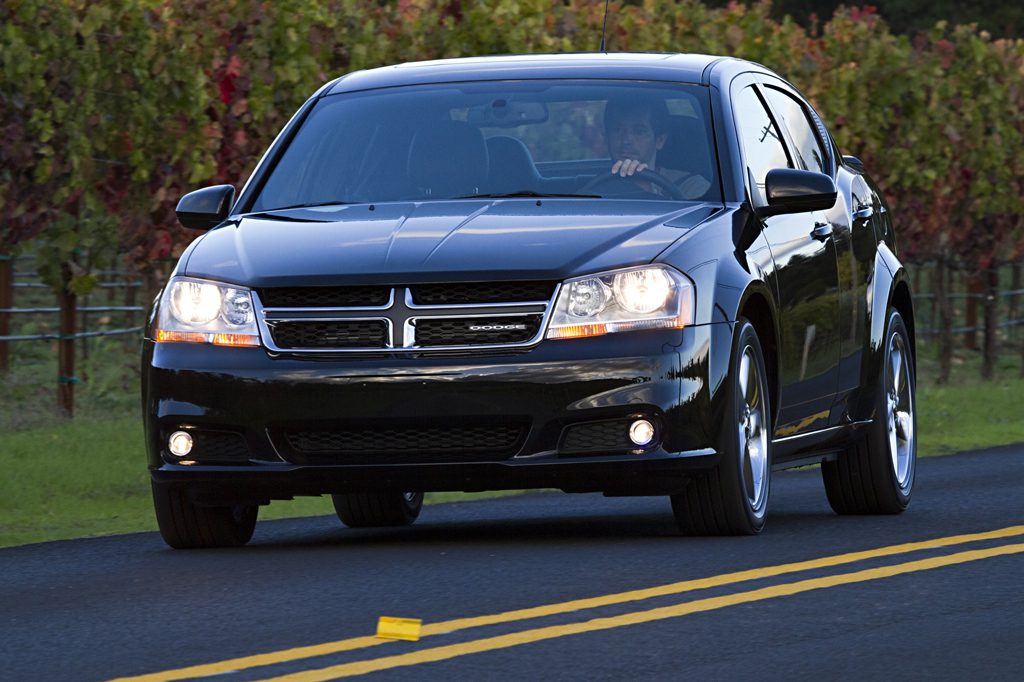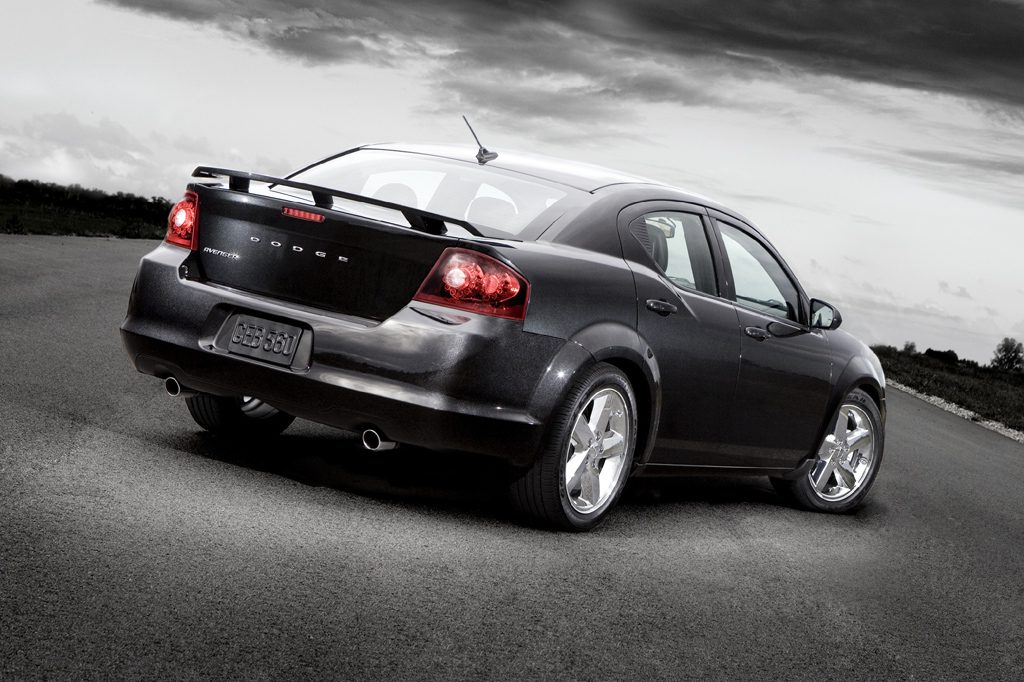| Midsize car; Built in |
|
|
| Good condition price range: $7,000 – $18,800* |

2011 Dodge Avenger

2011 Dodge Avenger

2011 Dodge Avenger

2011 Dodge Avenger
| Pros: |
|
| Cons: |
|
Avenger’s available V6 engine delivers great power and very impressive highway fuel economy. We like it so much, in fact, that buyers should ignore the standard 4-cylinder motor entirely. The cabin, while boasting a modern design with quality materials, is cramped for space, and rear visibility continues to be poor. Pricing remains a strong point to where you won’t have to shell out an exorbitant sum in order to obtain the V6 engine and useful conveniences, such as Chrysler’s Uconnect infotainment suite. Though it might not lead the midsize class in any one area, Avenger is no longer a sedan that’s easily dismissed as something that competes solely on price.
Overview
The 2011 Dodge Avenger got slightly freshened styling, a new interior, new V6 engine, and a revised model lineup. This midsize sedan retained the basic design of the 2008-2010 Avenger, a platform that is shared with the 2011 Chrysler 200. Two engines were offered. A 2.4-liter 4-cylinder engine teamed with a 4-speed automatic transmission or a 6-speed automatic. Optional was a 283-horsepower 3.6-liter V6 that paired with the 6-speed automatic. The V6 was capable of running on gasoline and/or E85 ethanol-blended fuel. Available safety features included ABS, traction control, antiskid system, curtain-side airbags, and front-side airbags.
Yearly Updates
| 2011 Avenger The only change of note for the 2012 Dodge Avenger was that the former Express, Mainstreet, and Lux trim levels were replaced by SE, SXT, SXT Plus, and R/T. |
| 2012 Avenger The Avenger largely stood pat for 2013. The only changes included some slight reshuffling of pricing and option-package contents. Also, the SXT Plus trim level was dropped. |
| 2013 Avenger The Avenger was largely unchanged for 2014. |
